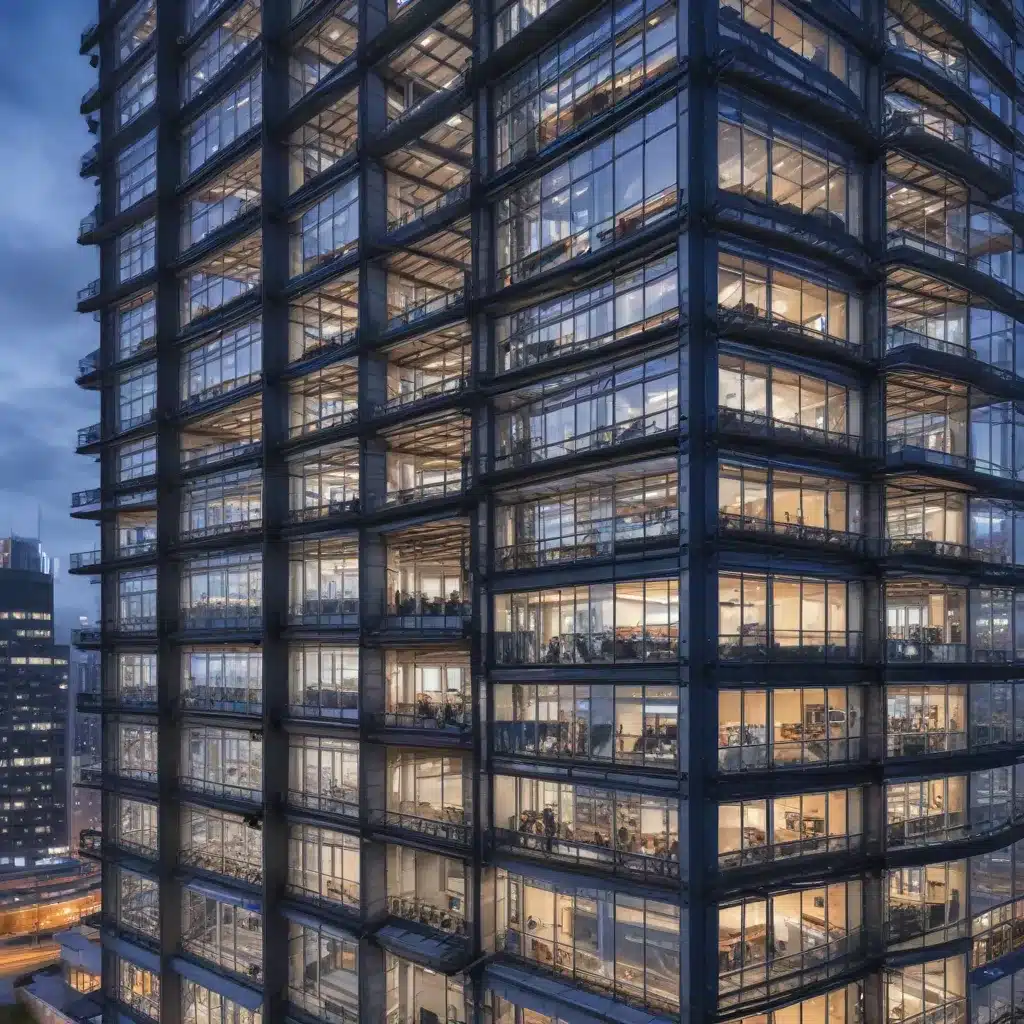
The built environment is a significant contributor to global energy consumption and carbon emissions. As cities and communities strive to meet ambitious sustainability goals, innovative technologies are emerging as crucial enablers for optimized building performance and management. One such transformative solution is digital twins – virtual replicas of physical buildings and infrastructure that can revolutionize how we design, operate, and maintain our built assets.
Fundamentals of Digital Twins
A digital twin is a dynamic, virtual representation of a physical object or system, continuously updated with real-time data from its physical counterpart. These hyper-realistic models integrate sensor data, historical information, and predictive analytics to provide deep insights into the performance and health of buildings, infrastructure, and urban systems.
Applications of Digital Twins
Digital twins can be applied at various scales, from individual buildings to entire city districts. At the building level, these virtual models can capture detailed information about a structure’s design, materials, systems, and operational performance. In the context of urban environments, city-scale digital twins integrate data from multiple sources, including IoT sensors, GIS, and building management systems, to create a holistic view of infrastructure, resources, and environmental conditions.
Benefits of Digital Twins
The application of digital twin technology in the built environment unlocks a wealth of benefits, transforming how we approach building performance and management:
Real-time Monitoring and Analytics: Digital twins provide a comprehensive, data-driven view of a building’s performance, allowing facility managers to monitor energy consumption, occupancy patterns, equipment status, and environmental conditions in real-time. This visibility enables proactive decision-making and informed interventions.
Predictive Maintenance: By analyzing historical data and performance trends, digital twins can predict potential equipment failures, identify maintenance needs, and optimize repair schedules. This proactive approach reduces unplanned downtime, extends asset lifespan, and lowers maintenance costs.
Energy Efficiency Optimization: Digital twins can simulate the impact of various energy-saving measures, such as HVAC system upgrades, lighting retrofits, or renewable energy integration. This allows building owners and operators to identify the most effective strategies for reducing energy consumption and greenhouse gas emissions.
Collaborative Workflows: Digital twins facilitate cross-functional collaboration among architects, engineers, facility managers, and occupants. By providing a common, data-rich platform, these virtual models enable streamlined design, construction, and ongoing operations, fostering improved communication and decision-making.
Optimized Building Management
The integration of digital twins into building management practices can drive significant improvements in efficiency, sustainability, and occupant well-being.
Real-time Monitoring and Analytics
Digital twins continuously collect and analyze data from a building’s various systems, including HVAC, lighting, access controls, and environmental sensors. This real-time monitoring allows facility managers to identify and address issues promptly, optimize resource utilization, and enhance occupant comfort.
Predictive Maintenance
By combining sensor data, historical performance records, and advanced analytics, digital twins can predict when equipment is likely to fail or require maintenance. This enables proactive intervention, minimizing unplanned downtime and extending the lifespan of building assets.
Energy Efficiency Optimization
Digital twins can simulate the impact of various energy efficiency measures, such as adjusting HVAC setpoints, upgrading lighting, or implementing renewable energy technologies. Facility managers can then use these insights to develop targeted strategies for reducing energy consumption and greenhouse gas emissions.
Integrating Digital Twins
The successful implementation of digital twins in building management relies on the integration of several key elements:
IoT and Sensor Integration
Seamless integration of Internet of Things (IoT) devices and sensors is essential for digital twins to collect comprehensive, real-time data about a building’s performance. This data provides the foundation for the virtual model’s accuracy and predictive capabilities.
Data Management and Analytics
Effective data management and advanced analytics are crucial for extracting meaningful insights from the wealth of information generated by digital twins. Robust data infrastructure, machine learning algorithms, and visualization tools enable facility managers to make informed, data-driven decisions.
Collaborative Workflows
Digital twins foster collaboration among stakeholders, including building owners, facility managers, occupants, and service providers. By providing a centralized, data-rich platform, these virtual models facilitate the coordination of design, construction, and ongoing operations.
Challenges and Considerations
While the potential of digital twins in building management is immense, there are several challenges and considerations that must be addressed:
Technological Barriers
Integrating disparate building systems, ensuring data interoperability, and maintaining the accuracy and fidelity of digital twins can pose technical hurdles. Overcoming these barriers requires a comprehensive, systems-based approach and investment in advanced digital infrastructure.
Data Security and Privacy
The collection and utilization of building data through digital twins raise concerns around data security and user privacy. Robust cybersecurity measures, data governance frameworks, and adherence to privacy regulations are essential to address these concerns.
Organizational Adoption
Successful implementation of digital twins requires a shift in organizational mindset, skills, and processes. Building owners and facility managers must be willing to embrace new technologies, adapt their workflows, and invest in the necessary training and change management initiatives.
As the built environment continues to play a crucial role in the global transition to sustainability, the integration of digital twins is poised to transform building performance and management. By harnessing the power of these virtual models, the real-world impact can be seen in enhanced efficiency, reduced emissions, and improved occupant well-being – all of which are essential for creating a more sustainable and resilient built environment. To learn more, please visit the European Future Energy Forum.






